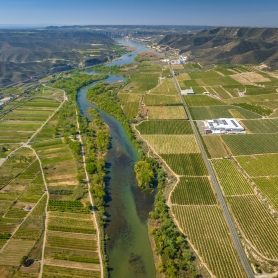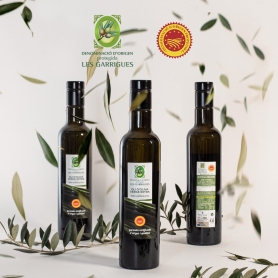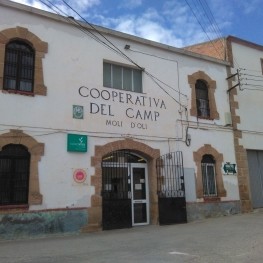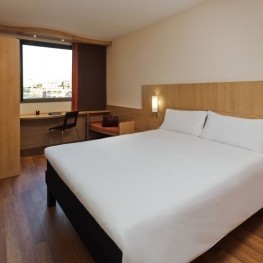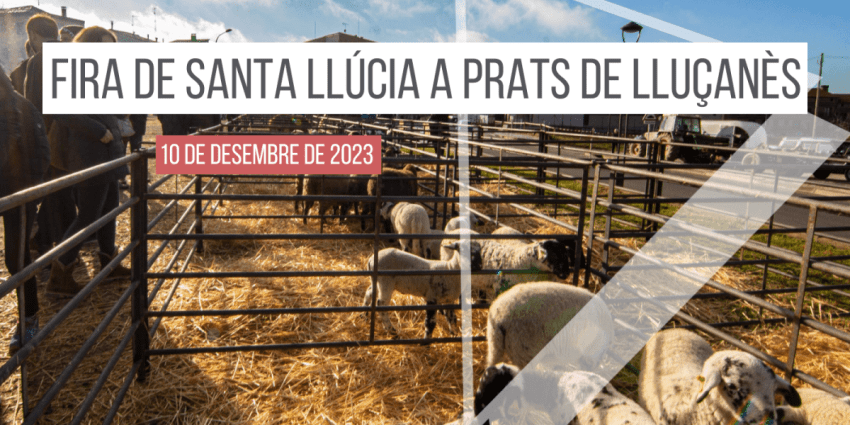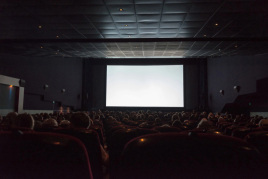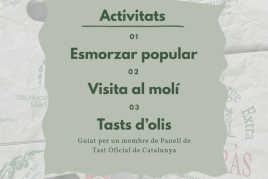Alcarràs Heritage Route
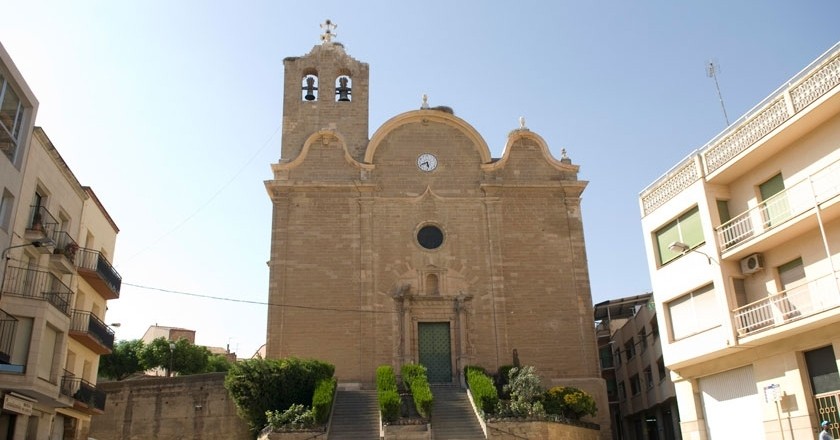
The current population of Alcarràs is of Islamic origin, but it is not historically documented until the 12th century. In the Ordinatio of the bishopric of Lleida of 1168 it appears as Alcarraz, as in other documents, referred to the Saracen castle and in the church. According to Zurita, Count Ermengol VI of Urgell conquered 1147-48 Alcarràs, Alguaire and Aitona (while Ramon Berenguer was in Almería) and the conqueror is appointed by Father Finestres (1752) of Alcarràs, son of Guerau de Jorba, lord of Montmeneu, Odena and Rubinat and relative of the counts of Barcelona. This surname, adopted after the conquest, would have been maintained by his descendants, closely linked to the hospital and the Templars.
In the 16th century, his successors became related to Castilian families and even stopped living in Barcelona. The population again suffered the consequences of the separation war and the French governor of M. de Rogles occupied the castle (1642), where they put a garrison, and then the castle was definitely disabled as confirmed by Marquis Filipo de Corsini, that accompanied Cosme de Médicis in 1668, when he says that they found a very ruined population called Alcarràs, of the Marquis "di Lafuente" (the successors of the Fernández de Heredia were counts of Fuentes), where the remains of a small castle were barely visible. By inheritance of the mentioned Heredia the domain of the site passed to the Dukes of Solferino at the beginning of the 18th century, which kept it until the ladies and gentlemen.
Alcarràs also suffered the War of Succession, but in 1721 it had been partly rebuilt and constituted a town hall (since 1500 a small municipal council had been run with three jurors or paers). The eighteenth century, coinciding with a notable demographic increase, the great church was built and the nucleus was extended along the highway of Madrid (1777) by the current Raval de Lleida.
In the war of Independence, the residents of Alcarràs became somatén and fought under the orders of Colonel Baget in the Sierra de Alcubierre and the Bruc. The French army occupied the town in 1810, facing the capture of Lleida. The population housed liberal detachments in the first and third Carlist war.
Madoz, in the mid-nineteenth century, still speaks of some castle towers, which was demolished at the end of the same century. In 1840, with the constitutional town hall, schools were created and in the summer of 1896 the Alcarràs spa appeared, with ferruginous sodium chlorinated waters, good for skin diseases until the doors closed in 1920. New industries also appeared (flour, sulfides, brandy, etc.).
Currently, the Villa de Alcarràs is characterized by an economy based mainly on agriculture and livestock, leading the list of municipalities with the most important agricultural census in Catalonia. However, in recent years it has also been surrounded by an extensive network of industrial estates, in which agrifood and services industry meets.
Do you accompany us to discover your heritage? Come on!
If we enter the municipality of Alcarràs we find...
Centennial Oak (Quercus ilex)
 It is a perennial tree with a dense crown located in the Coscollar area. It is about 8 meters high and the diameter of the cup is about 10 meters. The approximate age is 150 years.
It is a perennial tree with a dense crown located in the Coscollar area. It is about 8 meters high and the diameter of the cup is about 10 meters. The approximate age is 150 years.
More from Volta
The "volta" hamlets are built using the so-called dry stone technique. The origin of the "volta" farmhouses dates back to the beginning of the 19th century and its construction extends during the later years and until well into the 20th century. At certain times of the year, especially during the harvest, many families were forced to spend days and even weeks since the distance from the town to the work area was very large and much time was lost on round trips.
Jaumetó Mill
Within the municipality of Alcarràs, about two kilometers from the town center, is the Molino del Sastre, a flour mill of possible medieval origin and conserved remains visible from modern and contemporary times. It is a square-plan building that does not retain roofs and with the southern wall very ruined. About five meters to the south, in the margin of the field, the presence of an arch can be observed.
Montagut
 The town of Montagut, secularly added in Alcarràs, is in the northeastern sector of the term. the population was abandoned after the war of Segadors (1643) and was repopulated at the end of the 19th century as a result of the new irrigation of the Aragon and Catalonia canal. The hermitage of Montagut has a single ship, between medians, covered with barrel vault.
The town of Montagut, secularly added in Alcarràs, is in the northeastern sector of the term. the population was abandoned after the war of Segadors (1643) and was repopulated at the end of the 19th century as a result of the new irrigation of the Aragon and Catalonia canal. The hermitage of Montagut has a single ship, between medians, covered with barrel vault.
Vallmana
The house dates from the fifteenth century, after passing through several owners, he came to the president of the Generalitat of Catalonia, Francesc Macià, who continued the heavy enterprise of conditioning and improving the dry lands of Vallmanya. He had the hunters' house built, had a cotton pad and came hunters from Barcelona. His daughter Maria Macià Lamarca spent long periods on the farm.
Vilot
On the hill called the Vilot was the castle of Montagut. It was one of the Muslim fortresses that de Lleida Ibn Hilal ceded to the Count of Barcelona Ramon Berenguer III under an agreement made in 1120. The remains of the castle, near the church and the rural settlement of Montagut, was completely razed in the 1970s -1979.
On the other hand, as for the core of Alcarràs, they stand out as elements of interest...
Virgin Church of the Assumption
Trapezoidal church with three naves and a neoclassical baroque style transept. The harmonious and sober structure of the building is consistent with classicism, while the cover manifests its baroque character. The facade is made of chopped stone and has three varied crowning pediments. Above one of them stands the bell tower, which is half built and consists of two semicircular arch windows.
Spa
The distribution of both the openings and the different architectural elements is of a rationalist tendency. The building that is conserved of the spa was the one destined to housing of the director and at the moment it is destined to private housing, with a garden and an unbeatable environment.
The Union
 It was founded in 1918 at the initiative of Jaume Costa and Escolà. Modernist building by the architect Cesar Martinell y Brunet, a disciple of Gaudí. On the ground floor there was a coffee and on the first floor the dance and cinema. At the beginning of the twentieth century the people were divided into two political groups, right and left. those of rights met in the Union and those of lefts in the Casino.
It was founded in 1918 at the initiative of Jaume Costa and Escolà. Modernist building by the architect Cesar Martinell y Brunet, a disciple of Gaudí. On the ground floor there was a coffee and on the first floor the dance and cinema. At the beginning of the twentieth century the people were divided into two political groups, right and left. those of rights met in the Union and those of lefts in the Casino.
Through the Union you can access the Mill of the Union, a medieval mill of the twelfth century where the turns are in very good condition.
Ice well
It dates from the fourteenth century, built with stone ashlars and finished with a roof that is not preserved. It had a capacity of 204 m3 and served to have ice supply from May to October. The well was rented annually.
Wall
The stones of the wall are the remains of the old castle, from medieval times (14th century), on which the current church of Alcarràs was built .
Castle Cistern
Silo made of stone, located below the church square. The access was made by a staircase located at the entrance of the house num. 3 of the Church Square. Several neighbors claimed that the water in this cistern had healing properties for certain skin diseases.
Calistro lime cellar
Typical small house between ground floor and floor medians, where all the popular building elements are mixed: base of the stone walls, walls of cooked earth, tuffs and modern brick and covered with Arabic tile. The house was built on top of some cellars chopped in stone and that are currently in very good condition.
Ca l'Hereu
It dates from the 18th - 19th centuries. Large house located in a chamfer that consists of ground floor and two floors and still retains the original typology. On the ground floor there is a large portal adintelado with the family crest. On the first floor there are three balconies, on which three respective windows that correspond to the third floor are opened.
The Fossar
Remains of the Romanesque church (12th century), enlarged in Gothic style in the 14th century and Alcarràs cemetery. Next to it, the moat, sacred space and place where the Council of the Villa met when important issues related to the Common had to be addressed. In case of bad weather, the council was held inside the Church.
Ethnological Integration Space
 A space where all kinds of utensils used by farmers in the city before the modernization of agriculture are exposed. A trip back in time, making special mention of agriculture as a fundamentally prominent element of the rural world. It contains a varied background of pieces in permanent exhibition related to traditional life, culture and agriculture.
A space where all kinds of utensils used by farmers in the city before the modernization of agriculture are exposed. A trip back in time, making special mention of agriculture as a fundamentally prominent element of the rural world. It contains a varied background of pieces in permanent exhibition related to traditional life, culture and agriculture.
Historical Archive
Place where you can consult all the documentation generated over time related to all areas of the structure of a City Council, but especially referring to the documentation more linked to heritage, both material and intangible.
Term cross
At the entrance of all the villages there was a term cross made of stone with crucifixion or heraldic motifs. The crosses delimited the terms of the populations. They always stood by a road to welcome or fire the passersby who had passed through the town. The current one is a copy, since the original has not been preserved.
You can download the map of the municipality here and the one of the Alcarràs nucleus here.
Source: Alcarràs Town Hall
What to do
DOP Les Garrigues
Lleida (a 6 Km)Les Garrigues is the first Protected Designation of Origin (PDO) food recognized…
Cooperativa la Fraternal de l'Albagés
L'Albagés (a 22.1 Km)Agricultural cooperative located in the center of the region of Les Garrigues,…
Where to sleep
Hotels Ibis Lleida
Lleida (a 10.1 Km)Our Ibis hotel in Lleida is integrated into the commercial area of…


